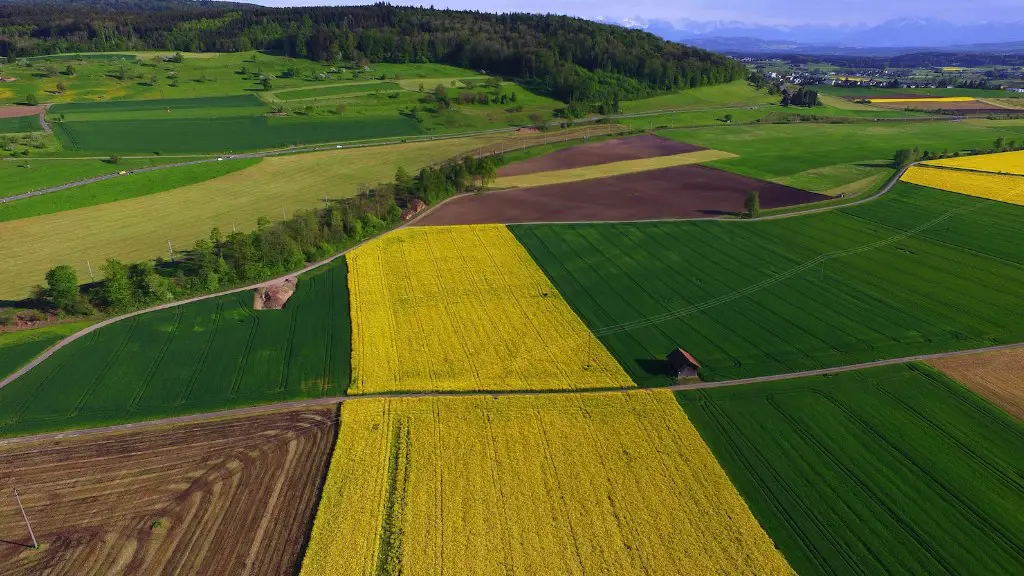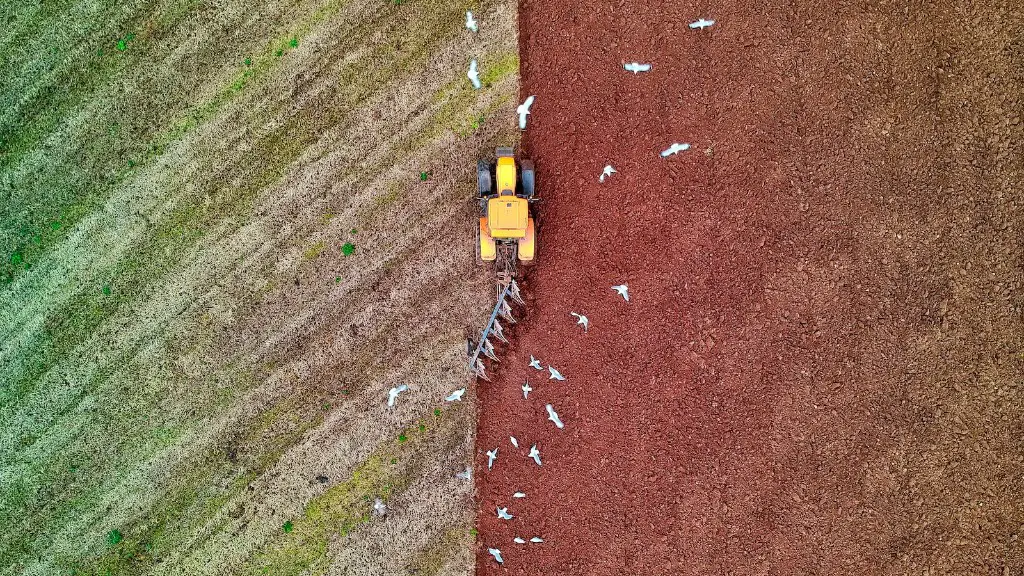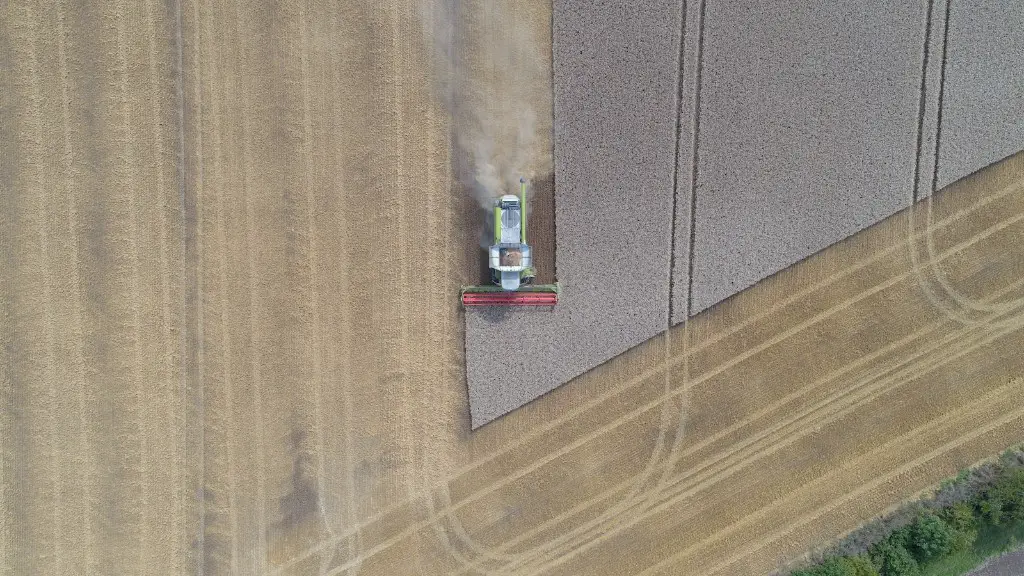The steel plow revolutionized the agricultural industry. It enabled farmers to plow deeper into the soil, allowing them to plant crops on more angles and cultivate much larger fields. Prior to the invention of the steel plow, farmers had to rely on wooden plows which limited their ability to cultivate large fields, making them much slower and labor intensive. Furthermore, wooden plows were not capable of plowing deep into the soil and tended to shallowly cut through the soil, unable to reach the richest parts of the soil.
In 1837, John Deere created the first steel plow, which quickly revolutionized the agricultural industry. The steel plow allowed farmers to plow deeper into the soil and cultivate larger fields with much less labor than before. This opened up vast tracts of land that were previously untilled or cultivated with a wooden plow. Thanks to the steel plow, farmers were able to utilize the richest parts of the soil to cultivate larger crops and make more money from their land.
The steel plow also enabled farmers to farm in much more challenging terrain. It enabled farmers to plow into hills and steeper slopes with the help of draft animals. This enabled them to cultivate land that would have previously been inaccessible. Thanks to this, many previously untapped areas of land were opened up, allowing farmers to cultivate larger plots and increase their yields.
The steel plow also changed the way farmers fertilized their lands. With the help of the steel plow, farmers were able to plow deeper into the soil and spread fertilizers more evenly and effectively. This allowed them to use less fertilizer and get more out of the land with fewer resources.
Overall, the invention of the steel plow changed the agricultural industry for the better. It enabled farmers to cultivate larger fields, more efficiently and with less labor, opening up new areas of land and allowing farmers to maximize their yields. It improved farmers’ income and helped to feed the growing population.
How the Steel Plow Ended Subsistence Agriculture
Prior to the invention of the steel plow, subsistence agriculture was the predominant form of agriculture in much of the world. This form of agriculture was characterized by small plots of land, tilled manually with hoes or wooden ploughs. These plots were not able to produce large yields due to their size, and farmers were only able to partially utilize the nutrients in the soil, resulting in low yields and severe food shortages.
The steel plow drastically increased the potential of subsistence agriculture by enabling farmers to cultivate significantly larger plots of land more efficiently. By plowing deeper into the soil, farmers were able to access more nutrients, and by using draft animals, they were able to work the land more easily and quickly. This allowed them to cultivate larger plots and increase their yields, leading to higher earnings and a reduction in food shortages.
Furthermore, the steel plow enabled farmers to cultivate challenging terrains like hills and slopes. This allowed them to expand their land holdings, leading to an overall increase in their productivity. This, coupled with the increased ability to access more nutrients from the soil, allowed subsistence farmers to produce larger yields and improve their livelihoods.
Overall, the invention of the steel plow ended subsistence agriculture by allowing farmers to cultivate larger fields more efficiently, access more nutrients from the soil, and harvest larger yields. This led to an overall improvement in farmers’ livelihoods, as well as a reduction in food shortages in many parts of the world.
The Impact of the Steel Plow on Aspects of Agriculture
The invention of the steel plow had a wide-reaching impact on many aspects of the agricultural industry. Firstly, it enabled farmers to access the richest parts of the soil more easily, leading to increased nutrient uptake and larger yields. This allowed farmers to maximize their profits from the land, and it improved their overall income.
The steel plow also enabled farmers to cultivate larger fields and expand their land holdings. This led to an increase in productivity, allowing them to produce more crops and make more money from the land. Furthermore, this allowed farmers to access new areas of land that would have been previously in accessible, such as hills and steeper slopes.
The steel plow also allowed farmers to cultivate land with fewer resources and less labor. This enabled them to reduce their labor costs and save money. Additionally, this allowed farmers to reduce food shortages in many parts of the world, leading to an overall improvement in the food supply.
Overall, the invention of the steel plow revolutionized the agricultural industry by increasing the efficiency of cultivation, opening up new areas of land, and improving the overall food supply. It had a direct impact on many aspects of the agricultural industry, leading to improved income and fewer food shortages.
How the Steel Plow Affected Global Trade
The invention of the steel plow had a significant impact on global trade. As agriculture became more efficient, it allowed for increased production and higher yields. This allowed for an increase in the supply of food, leading to lower prices and increased demand in many parts of the world. This increased demand for food spurred a wave of international trade, connecting producers to consumers around the world.
Furthermore, the steel plow enabled farmers to access previously inaccessible areas of land, allowing them to cultivate larger fields. This led to a boom in agricultural expansion, as much of the world’s arable land was opened up. This increase in production led to a rise in exports, as farmers were able to capitalize on the increased demand for food. This created a wave of global trade, connecting producers around the world.
Overall, the invention of the steel plow caused a drastic shift in the global trade of agricultural products. It enabled farmers to access more land, increase production, and capitalize on the increased demand for food. This led to a wave of international trade and an overall improvement in the global food supply.
The Legacy of the Steel Plow in Modern Agriculture
The legacy of the steel plow is still evident in modern agriculture. The invention of the steel plow enabled agriculture to become more efficient, granting farmers access to more land, increased yields, and improved incomes. This revolutionized the agricultural industry, and its effects are still seen today.
Modern farming relies heavily on technologies such as tractors and combines, which were made possible by the steel plow.Tractors allow farmers to move faster and work longer hours, while combines enable them to harvest larger fields with fewer resources. Furthermore, many of today’s fertilizers and pesticides were developed to be used in conjunction with the steel plow, allowing for more precise and effective application of nutrients.
The steel plow also enabled farmers to access new areas of land, such as hills and steeper slopes. This opened up vast tracts of land that have since been cultivated and utilized for agricultural purposes. Additionally, with the help of draft animals and the steel plow, farmers were able to efficiently cultivate land in previously inaccessible areas, which has helped to feed the world’s growing population.
Overall, the legacy of the steel plow is still evident in modern agriculture. It enabled farmers to cultivate larger plots of land with fewer resources and access nutrients more efficiently. It opened up new areas of land, improved yields, and fed the growing population. It revolutionized the agricultural industry and its effects are still seen today.





